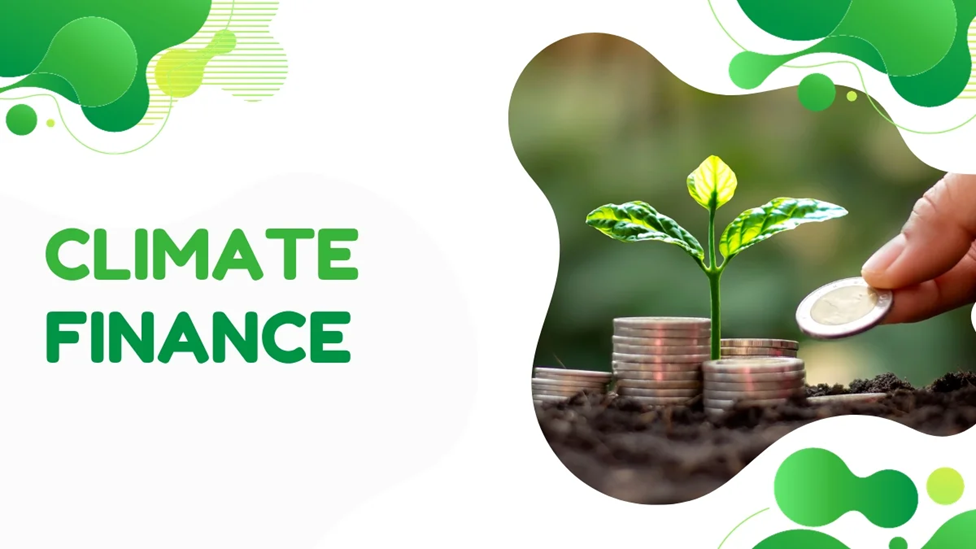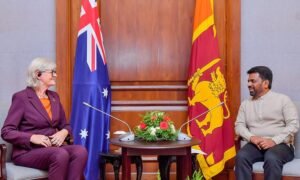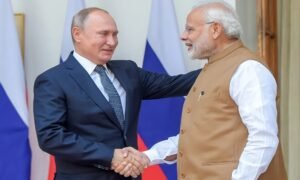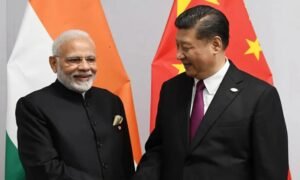

By P.M. Dilini Bhagya Weerasekara
As new technologies transform our lives, global temperature and CO₂ concentration are quietly climbing, and climate change has taken center stage. The main international agreement for coordinating responses to climate change is the United Nations Framework Convention on Climate Change (UNFCCC), which seeks to stabilize atmospheric concentrations of greenhouse gases at a level that precludes hazardous human intervention with the climate system.
The 30th Conference of the Parties (COP30) of the United Nations Framework Convention on Climate Change (UNFCCC) will be hosted in Belem, Brazil in November 2025. As part of Oxfam in Asia’s COP30 influencing strategy, Oxfam in Bangladesh successfully concluded the Asia Youth Climate Justice Learning, Planning, and Mobilization Camp on the 16th of August. Asia is the world’s most climate-vulnerable area, with the highest number of weather, climate, and water-related catastrophes predicted in 2023.
Nineteen young climate activists from across Asia participated in the four-day camp. On the first day, theoretical aspects of climate finance, climate justice, and climate loss and damage adaptation were explained by the experts in the field. Dr. Mohammed Emran Hasan, Head of Climate Justice and Natural Resource Rights (CJNRR) explained the issues of adaptation, loss and damage, and climate finance for the energy transition. Mr. Md. Zariful Islam (Oxfam in Bangladesh) explained the importance of advocacy for climate action, the key elements of effective advocacy strategies, and how they reflect grassroots events and connect to lived realities, while Dr. Kabil Khan, Associate Professor, Journalism, Media and Communication Department, Daffodil International University, explained how mobile reporting should take place in the climate zone.

In order to witness the effects of climate change on Bangladesh’s landscape, Oxfam and partner colleagues were divided into three teams and visited various areas. One group visited Chakaria, Cox’s Bazar, to learn from coastal communities facing rising sea levels, salinity intrusion, and ecosystem degradation. Cox’s Bazar, home to the biggest refugee camp in the world, is one of the country’s disaster-prone areas, regularly hit by landslides, floods, and tropical storms.
The other two groups visited Rajshahi District and slums in Dhaka. Rajshahi is one of Bangladesh’s six major cities, as well as the divisional headquarters of the Rajshahi division and the administrative district of the same name, and is also known as Silk City because of its high-quality and cheap silk items. Rajshahi is also well-known for its fruits, particularly mangos and lychee. The primary objective of the visit to Rajshahi was to study the impacts of drought, heat stress, and to explore climate-resilient livelihood strategies in an agriculturally dependent region. The majority of the population in Rajshahi relies heavily on agriculture for their daily sustenance. However, their livelihoods are increasingly under threat due to the adverse effects of climate change, particularly the rising frequency and intensity of droughts and heatwaves. Dhaka’s slums are bearing the brunt of urban climate stress, with rising temperatures, waterlogging, and insecure housing putting vulnerable communities at greater risk. These conditions fuel social segregation and lead to stark health disparities. Lived experiences were recorded throughout the past two days, and new information about the human costs of climate change was discovered. These exchanges emphasized how urgently the global north must assist the global south and reaffirmed the significance of fair climate funding. Following that, climate advocates from all across Asia created a plan at the level for Bangladesh and investigated regional-level approaches to group action, making sure that information and resources result in concrete, locally driven solutions.

Asia is the most disaster-prone region globally
Asia, the largest continent on Earth, is home to over one-fifth of the global population, making it not only the most populous but also the most densely populated geographical region in the world. According to the United Nations, currently there are 48 countries in Asia. Additionally, the vast, distinctive landmass that symbolizes the southern part of the Asian continent is known as South Asia. Sri Lanka, Bangladesh, India, Nepal, Pakistan, Bhutan, Maldives and Afghanistan are the eight countries that make up South Asia. Within Asia, South Asia stands out as particularly vulnerable, recognized as the most disaster-prone region globally. According to the United Nations Environment Programme (UNEP, 2003), South Asia faces an exceptionally high frequency of natural disasters, ranging from floods and earthquakes to cyclones and droughts events that disproportionately impact millions of lives across the region every year.
Climate change, as defined by the Intergovernmental Panel on Climate Change (IPCC), refers to any change in climate over time, whether caused by natural variability or human activity. This usage differs from that in the United Nations Framework Convention on Climate Change (UNFCCC), where climate change refers to a change in climate that is attributed directly or indirectly to human activity that alters the composition of the global atmosphere, in addition to natural climate variability observed over comparable time periods. Short-term variations (fluctuations) in climate that are not sustained over an extended period are called climate variability. Eg – Droughts, extreme rainfall events, floods. Climate variability is often erroneously termed as ‘climate change’. Hence, climate variability should be distinguished from climate change. A sustained long-term (> 30 years) increase in climate variability can be considered as ‘Climate change’.
According to well established climate change literature, extreme hydroclimatic weather (rain, storms, cyclones), flooding, fires (natural lightning, heat), extreme warm and cold weather, drought, desertification, sea level rise, landslides, and biodiversity loss are some of the environmental phenomena that may be connected to anthropogenic climate change in Bangladesh and the larger Asia region. Climate change becomes a challenge to agricultural production in food-insecure regions, particularly in Asia. Climate-driven extremes such as drought, heat waves, irregular and strong rainfall patterns, storms, floods, and emerging insect pests have all had a negative impact on farmers’ livelihoods. Future climatic predictions have revealed a large increase in temperature and more unpredictable rainfall, as well as variability in climatic patterns for predicting climate extremes.

Global Climate Action
Formally recognizing the facts of climate change began in 1979, with the first World Climate Conference in Geneva. The World Meteorological Organization organized the World Climate Conference in reaction to climatic changes seen during the previous decade. This meeting may have been the first of its kind to address the negative consequences of climate change. The World Meteorological Organization and the United Nations Environment Programme (UNEP) established the Intergovernmental Panel on Climate Change (IPCC) in 1988 to give governments and other official bodies scientific data and knowledge that can be utilized to create policies pertaining to climate change.
Perhaps the most significant action taken was the approval of the United Nations Framework Convention on Climate Change (UNFCCC) in 1992, which entered into effect in 1994. Since then, the United Nations Framework Convention on Climate Change (UNFCCC) has been the primary driver and facilitator of global climate action. The convention’s primary goal is to keep greenhouse gas concentrations in the atmosphere stable in order to avoid significant repercussions on the climate system. The convention established commitments for all parties concerned, placing significant responsibility on industrialized countries to execute national policies to reduce anthropogenic emissions and increase greenhouse gas sinks.
The goal was to reduce emissions to prior decade levels by 2000. Furthermore, promising developed country parties to provide financial and technological support to vulnerable developing country parties so they can take climate action. By establishing the framework, reporting standards, and financial resource mechanism, the treaty essentially laid the stage for international climate policy (UN 1992). There are now 197 nations that have ratified the agreement (UNCCS 2019).
The Kyoto Protocol was established at the third UNFCCC meeting of the parties (COP-3) in 1997 and became operative in 2005. The Kyoto Protocol established industrialized nations’ pledges to reduce their emissions over a five-year period, from 2008 to 2012.

Mitigation Strategies
The literature discusses three primary strategies for mitigating the effects of climate change. First, conventional mitigation strategies include decarbonization technology and methods, like nuclear power, efficiency improvements, fuel switching, renewable energy, and carbon capture, storage, and use, to lower CO2 emissions.
A second route constitutes a new set of technologies and methods that have been recently proposed. These techniques, which are also known as carbon dioxide removal methods or negative emissions technologies, have the potential to be used to capture and sequester CO2 from the atmosphere. In addition to alternative negative emissions utilization and storage methods like mineral carbonation and using biomass in construction, the primary negative emissions techniques that are extensively discussed in the literature are bioenergy carbon capture and storage, biochar, enhanced weathering, direct air carbon capture and storage, ocean fertilization, ocean alkalinity enhancement, soil carbon sequestration, afforestation and reforestation, and wetland construction and restoration.
The third approach is based on the idea that managing terrestrial and solar radiation can change the earth’s radiation balance. The primary goal of these methods, which are referred to as radiative forcing geoengineering technologies, is to stabilize or lower the temperature. This is accomplished without changing the atmospheric concentrations of greenhouse gases, in contrast to negative emissions technology. Stratospheric aerosol injection, maritime sky brightening, cirrus cloud thinning, space-based mirrors, surface-based brightness, and other radiation management strategies are the primary radiative forcing geoengineering methods covered in the literature. There is a great deal of uncertainty and risk associated with the practical large-scale deployment of all these strategies, which are still theoretical or in very early testing stages. Currently, policy frameworks do not incorporate radiative forcing geoengineering methods.
By P.M. Dilini Bhagya Weerasekara
Cover picture source: https://www.linkedin.com/pulse/introduction-climate-finance-ruhul-amin-rei9c








